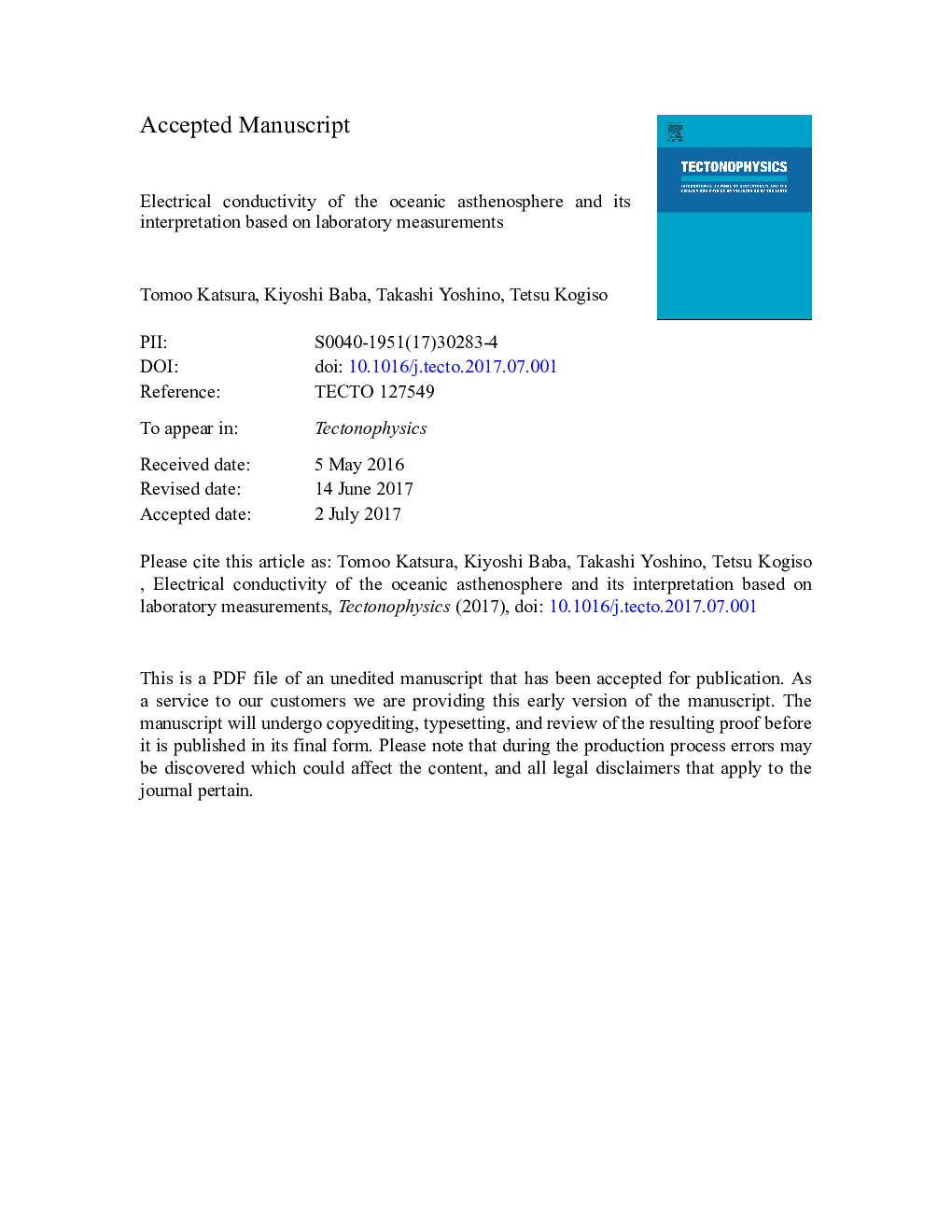| کد مقاله | کد نشریه | سال انتشار | مقاله انگلیسی | نسخه تمام متن |
|---|---|---|---|---|
| 5781466 | 1636691 | 2017 | 59 صفحه PDF | دانلود رایگان |
عنوان انگلیسی مقاله ISI
Electrical conductivity of the oceanic asthenosphere and its interpretation based on laboratory measurements
ترجمه فارسی عنوان
هدایت الکتریکی آستنوسفر اقیانوسی و تفسیر آن بر مبنای اندازه گیری های آزمایشگاهی
دانلود مقاله + سفارش ترجمه
دانلود مقاله ISI انگلیسی
رایگان برای ایرانیان
کلمات کلیدی
رسانایی الکتریکی، آستنوسفر اقیانوسی، اولیوین، لایه هدایت بالا، ذوب اولیه فرار،
موضوعات مرتبط
مهندسی و علوم پایه
علوم زمین و سیارات
فرآیندهای سطح زمین
چکیده انگلیسی
We review the currently available results of laboratory experiments, geochemistry and MT observations and attempt to explain the conductivity structures in the oceanic asthenosphere by constructing mineral-physics models for the depleted mid-oceanic ridge basalt (MORB) mantle (DMM) and volatile-enriched plume mantle (EM) along the normal and plume geotherms. The hopping and ionic conductivity of olivine has a large temperature dependence, whereas the proton conductivity has a smaller dependence. The contribution of proton conduction is small in DMM. Melt conductivity is enhanced by the H2O and CO2 components. The effects of incipient melts with high volatile components on bulk conductivity are significant. The low solidus temperatures of the hydrous carbonated peridotite produce incipient melts in the asthenosphere, which strongly increase conductivity around 100 km depth under older plates. DMM has a conductivity of 10â 1.2 ~â 1.5 S/m at 100-300 km depth, regardless of the plate age. Plume mantle should have much higher conductivity than normal mantle, due to its high volatile content and high temperatures. The MT observations of the oceanic asthenosphere show a relatively uniform conductivity at 200-300 km depth, consistent with the mineral-physics model. On the other hand, the MT observations show large lateral variations in shallow parts of the asthenosphere despite similar tectonic settings and close locations. Such variations are difficult to explain with the mineral-physics model. High conductivity layers (HCL), which are associated with anisotropy in the direction of the plate motion, have only been observed in the asthenosphere under infant or young plates, but they are not ubiquitous in the oceanic asthenosphere. Although the general features of HCL imply their high-temperature melting origin, the mineral-physics model cannot explain them quantitatively. Much lower conductivity under hotspots, compared with the model plume-mantle conductivity suggests the extraction of volatiles from the plume mantle by the ocean island basalt (OIB) magmatism.
ناشر
Database: Elsevier - ScienceDirect (ساینس دایرکت)
Journal: Tectonophysics - Volume 717, 16 October 2017, Pages 162-181
Journal: Tectonophysics - Volume 717, 16 October 2017, Pages 162-181
نویسندگان
Tomoo Katsura, Kiyoshi Baba, Takashi Yoshino, Tetsu Kogiso,
